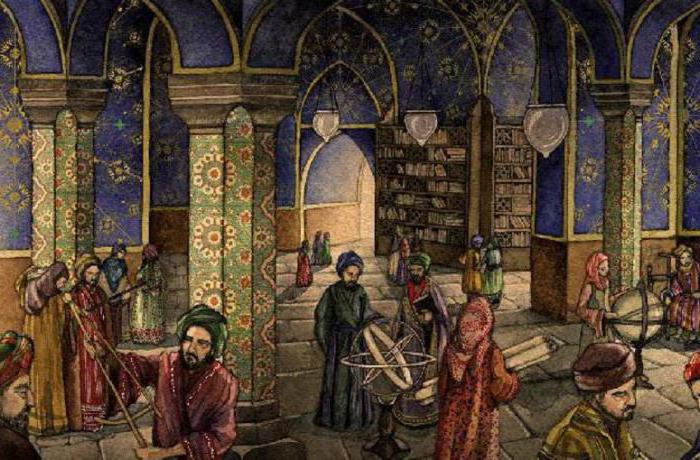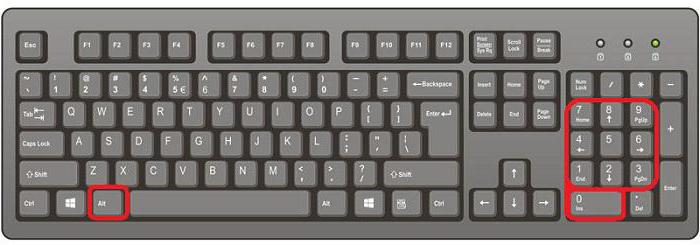Why figures are called Arabic: history
All people from early childhood know the numbers, withwhich help account items. There are only ten of them: from 0 to 9. Therefore, the system of calculus is called a decimal system. With the help of them, you can write down absolutely any number.
For thousands of years people have used their fingers tothe notation of numbers. Today, the decimal system is used everywhere: to measure time, when selling and buying something, with different calculations. Everyone has their own numbers, for example, in a passport, on a credit card.
By the Milestones of History
People are so used to numbers that they do not eventhink about their importance in life. Probably, many have heard that the figures that are used are called Arabic. Some people explained this at school, but someone learned by chance. So why are the numbers called Arabic? What is their story?

And she is very confused. There are no reliably accurate facts about their origin. It is known for sure that ancient astronomers are worthy of thanks. Because of them and their calculations, people today have numbers. Astronomers from India somewhere between the II and VI centuries met with the knowledge of Greek colleagues. From there, a sixty-digit system of calculus was taken and a round zero. Then the Greek was combined with the Chinese decimal system. Hindus began to designate the numbers in one sign, and their way quickly spread throughout Europe.
Why are the numbers called Arabic?
From the eighth to the thirteenth century, the easternthe civilization actively developed. This was especially noticeable in the sphere of science. Much attention was paid to mathematics, astronomy. That is, the accuracy was in honor. Throughout the Middle East, the main center of science and culture was the city of Baghdad. And all because he was geographically very profitable. The Arabs did not hesitate to take advantage of this and actively adopted many useful things from Asia and Europe. Baghdad often collected prominent scientists from these continents who passed on experience and knowledge to each other, told about their discoveries. At the same time, the Hindus and the Chinese used their calculus systems, which consisted of only ten symbols.

Arabic numerals were invented by no Arabs at all. They just appreciated the advantages of them, in comparison with the Roman and Greek systems, which were considered the most perfect in the world at that time. But it is much more convenient to display infinitely large numbers with only ten signs. The main advantage of Arabic numerals is not the convenience of writing, but the system itself, since it is positional. That is, the position of the digit affects the value of the number. So people define units, tens, hundreds, thousands and so on. Not surprisingly, Europeans took this into service and adopted Arabic numerals. This is what wise scientists were in the East! Today it seems very surprising.
Writing
What are the Arabic numerals? Previously, they were composed of steep lines, where the number of angles was compared with the magnitude of the sign. Most likely, Arab mathematicians have suggested that it is possible to relate the number of angles to the numerical value of a digit. If you look at the ancient spelling, you can see how much the Arabic numbers have. What are the abilities of scientists in such an ancient time?

So, zero has no angles in writing. The unit includes only one acute angle. The twin contains a couple of sharp corners. Three has three corners. Its correct Arabic spelling is obtained by plotting the zip code on envelopes. Four includes four corners, the last of which creates a tail. The five have five right angles, and the six have six, respectively. With the correct old writing, the seven consists of seven corners. Eight - out of eight. And nine, it is not difficult to guess, is out of nine. That's why the numbers are called Arabic: they were invented by the original design.
Hypotheses
Today there is no unequivocal opinion aboutthe formation of the writing of Arabic numerals. No scientist knows why certain figures look exactly this way, and not somehow in a different way. What guided ancient scholars by giving figures to forms? One of the most plausible hypotheses is the same, with the number of angles.

Of course, with the passage of time, all the angles of the digitssmoothed out, they gradually acquired the familiar look of modern man. And for many years, Arabic numerals around the world have been used to designate numbers. It's amazing that only ten characters can convey unimaginably large values.
Outcomes
Another answer to the question of why the figuresare called Arabic, is the fact that the very word "figure" is also of Arab origin. Mathematicians translated the word "Hindu" to their native language and it turned out to be "SIFR", which is similar to what is being said in our days.
This is all that is known about why the numbersare called Arabic. Perhaps modern scientists will still make any discoveries on this subject and shed light on their occurrence. In the meantime, people are content only with this information.
</ p>




